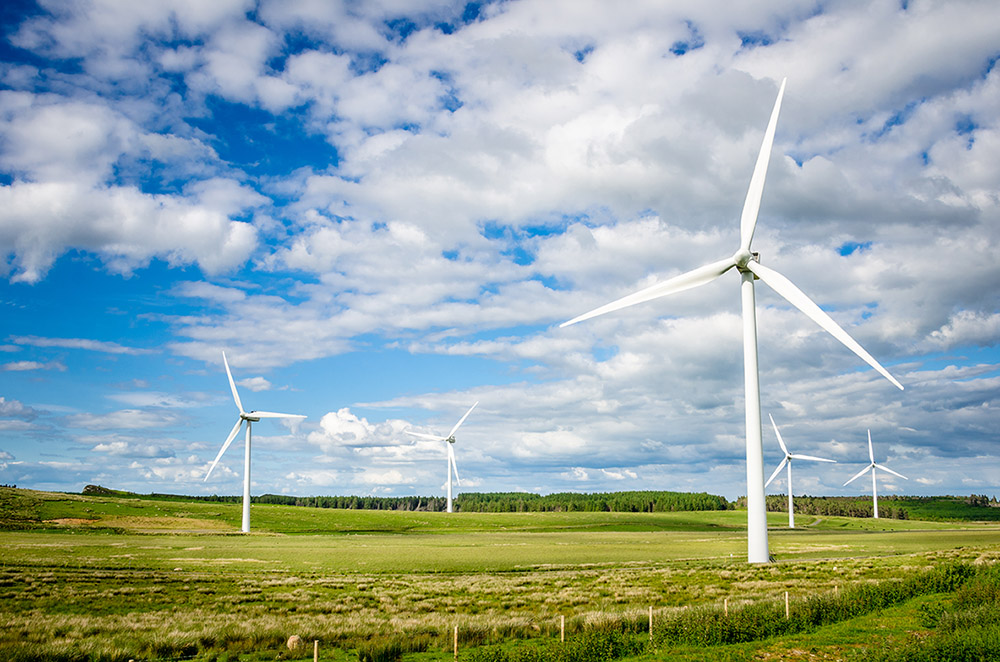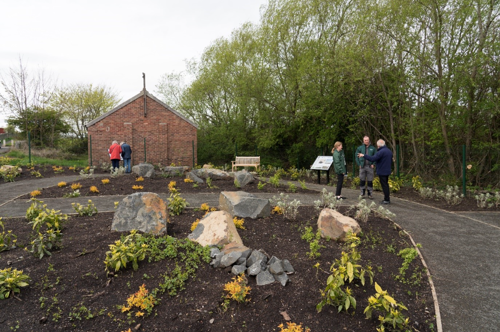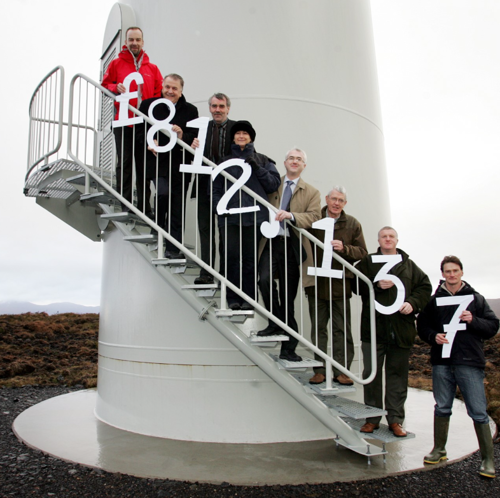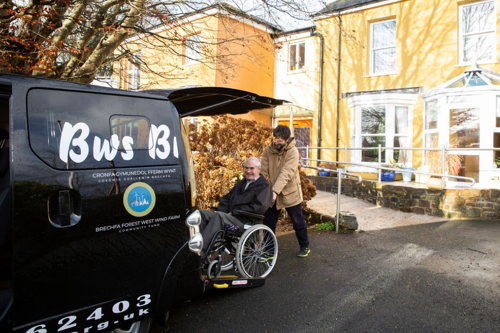


Community benefits and engagement in the onshore wind sector
The onshore wind sector has a long history of engaging with and supporting local communities who host onshore wind through a wide variety of community benefit schemes over a project’s lifetime.
These initiatives, which involve the onshore wind industry sharing the rewards of renewable energy development with local communities, are often called 'Community Benefits.'
These benefits have is has become an established feature for the delivery of onshore wind projects across the UK.
Learn more about...
What are the different forms of community benefit?
Communities located close to onshore wind developments can work with developers on the delivery of community benefits. The type of community benefit received varies on the project and the needs of the community. It is important to recognise that no two communities are the same and therefore there is no there is no one-size fits-all approach.
Click on a tab below to find out more about one of the three main forms of community benefits:
- Community benefit funds (CBFs)
- Local Electricity Discount Schemes (LEDS)
- Local or shared ownership
Community Benefit Funds (CBFs)
CBFs are voluntary financial arrangements with the community. The fund allows the community to make use of long-term, reliable, and flexible funding to directly improve their local area, environment, society, and economy.
- These are popular models that have a proven track record of providing financial benefits to communities.
- They offer significant flexibility to communities and can be used to support a wide range of projects.
- They also provide flexibility on how the funds are delivered so communities can fund what they need when they need it.
Case study: SSE Renewables Scholarship Programme
Providing training and education is crucial for preparing the next generation for skilled jobs. The SSE Renewables Community Benefit Fund Scholarship programme has, over the past decade been instrumental in helping local students pursue their further education goals.
The Scholarship Fund is delivered in partnership with Ulster University, South West College and North West Regional College. The fund provides up to 50% of third-level fees up to a maximum of three years to students living in Co. Derry/Londonderry, Co. Tyrone, Co. Fermanagh, and Co. Donegal.


Case study: ScottishPower Renewables, Lynemouth Wind Farm
Lynemouth Wind Farm is a 13-turbine project capable of generating up to 26 megawatts of electricity. The project is situated approximately two kilometres north of Ashington in the Northeast of England and officially opened in May 2012.
The Lynemouth Wind Farm community benefit fund was utilised to create a community garden on previously derelict land and is an important resource for local school children and other community members to visit, enjoy and learn about Lynemouth. The ScottishPower Renewables community team liaised with Lynemouth Parish Council during the development of the information boards in the garden that tell the story of the birth of this traditional mining village and its evolution towards hosting green energy generation and all the benefits it brings. This has helped create a legacy for Lynemouth as a mining town whilst embracing its new future as being a host to an onshore wind farm and producing green electricity that benefits everyone.
Local Electricity Discount Schemes (LEDS)
This is an initiative where residents and local businesses who are located near an onshore wind farm can benefit from discounted electricity bills on an annual basis.
- Local electricity discount schemes are one of the most direct forms of community benefit and can provide a clear and obvious energy link between a local project, equating to a financial impact for residents.
Case study: Tallentire Wind Farm (12MW), England
Tallentire Wind Farm (12MW), England. Owned by The Renewables Infrastructure Group (TRIG). Developed, constructed and operated by RES
Tallentire Wind Farm is a 12MW project in Cumbria, England, which became operational in June 2013.
The project, which is owned by TRIG and operated by RES, delivers direct community benefits to the local community via RES’ unique Local Electricity Discount Scheme (LEDS) for properties within 2km of the turbines.
The annual discount is index-linked annually. In 2024, eligible properties benefitted from a discount of £145. The project also provides a community benefit fund of £24,000 per year, totalling a community benefit package worth around £60,000 per year.
LEDS provided its first payments directly to households in 2014, once the wind farm was fully operational. Any surplus LEDS funds are used to increase the annual community fund contribution.

Shared and local ownership
Shared ownership can work in several ways and involves a community forming a group to become a financial partner in a renewable energy project.
- Shared ownership can allow a community to feel more involved, which can build support and a legacy for a project.
- This form of community benefit is not always suitable for every community however, as the investment can go up as well as down and these schemes can be complex to set up and require upfront investment from communities.
Case study: Nadara's local cooperative
Over the last 20 years Nadara has provided local communities with the opportunity to invest in some of their UK plants through local cooperative schemes.
Under a cooperative scheme, local people are offered the opportunity to buy a stake in a new plant through a cooperative. Cooperative members then receive an annual return with interest rates linked to the productivity of the plant. Preference for joining the scheme is given to people living close to the projects to maximise the economic benefits to the local community.
This model is being replaced by Community Benefit Societies, or BenComs, where returns cannot simply go to individuals but have to be reinvested in the local community. Two of Nadara’s operating plants already have BenComs instead of cooperatives.
Since 2005 when the model was first applied at the Boyndie Wind Farm, Nadara has created seven cooperatives/BenComs covering eight of their wind farms in Scotland, with approximately 3,600 participating members.
The scheme allows the direct participation of communities in the development and production of local plants, creating greater awareness and confidence in the potential of renewable energy and enabling people to actively participate in the energy transition.

What are the levels of investment in Community Benefit Funds?
For onshore wind developments alone, Community Benefit Fund investment for communities closest to wind farms across the UK is estimated to be around £75 million a year. This includes over £55 million in Scotland, more than £10 million in England, over £6.5 million a year in Wales, and more than £3 million in Northern Ireland.
Scotland currently has more operational projects resulting in higher levels of community benefits. Since the lifting of the de-facto ban on onshore wind in England in 2024, there has been increased focus on supporting the development of onshore wind across the UK. If the UK reaches its 2030 targets the levels of community benefit available for communities annually is likely to significantly increase across the UK.

Wider benefits from onshore development
There are also indirect benefits to communities from hosting onshore wind farms such as significant tax contributions through business rates to local authorities, apprenticeships, local employment opportunities, biodiversity and nature enhancements.
Community engagement
The delivery of community benefits requires effective communication and interaction between developers and communities that will host an onshore wind project.
At the heart of building meaningful relationships with communities is ensuring that developers are approachable and respectful of its project’s neighbours throughout the lifetime of a project.
Community benefit packages should take a bespoke approach to each project and its unique make-up.
The ultimate package offered will be based on several factors, informed by consultation and engagement with as broad a range of local stakeholders as possible. Ensuring a lasting legacy from community benefits is also a key element and is at the heart of what makes this approach so unique.

Principles of good community engagement
- Effective consultation, including early engagement with communities that is open-ended; time effective; cost-effective where possible and reaches the widest possible pool of people in the community.
- Good governance, involving providing training for the people managing the fund, completing due diligence on a project’s fund, reporting on how the funding is spent and evaluating projects and reviewing priorities at regular points during the lifetime of the fund.
- Lasting legacy: this can include supporting locally run initiatives, encouraging community capacity building and enabling community involvement in decisions on how the community will receive the benefits offered in their area.
- Community engagement case study: Brechfa Forest Wind Farm, RWE
Brechfa Forest Wind Farm is a 57.4MW project in Carmarthenshire and was commissioned in 2018. The RWE Brechfa Forest Wind Farm Fund was launched in 2018 by RWE and is worth £11 million over the lifetime of the wind farm.
The fund aims to support the communities that neighbour the wind site. With a flexible approach, local knowledge and community support, the Brechfa Fund is transforming lives and proving that community-led initiatives can have a lasting impact.
During the consenting process, RWE engaged with an independent community development consultant to work with the local community to carry out a community profiling exercise. The aim was to raise awareness about the long-term funding opportunity, understand more about the community priorities and aspirations, as well as encouraging the community to build capacity and plan for the arrival of funds. Further consultation by the developer in 2017 provided the opportunity for everyone in the community to have their say and helped shape the structure of the fund.
The CBF is entirely community led with every decision made by a panel of local people who live, work, or donate their time within the wind farm’s 6km benefit zone. Their local knowledge is invaluable in making informed choices about what’s important for the area.
Applicants are supported and handheld by a locally based fund manager who works for the fund administrator, Antur Cymru an independent, local social enterprise, who was appointed as fund administrator following an open tender process. The fund supports capital projects and revenue funding with several salaried roles benefitting from multi year awards.



